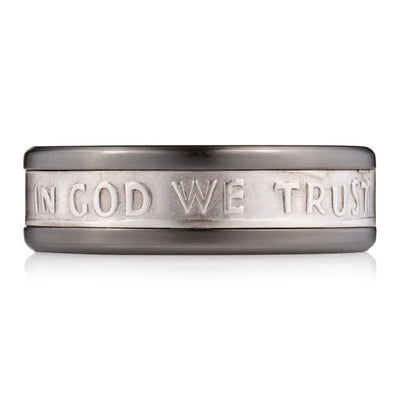As an artisan who specializes in crafting exquisite Silver Dollar Rings from Morgan Silver Dollar coins, my preference almost always leans towards the 1921 coins. Being a fervent coin collector as well, I deeply value each coin's distinct rarity and collectability. Fortunately, the abundance of 1921 coins allows me to indulge in my craft of creating unique coin jewelry without disrupting the delicate balance of the numismatic world. So, how did these 1921 Morgan dollars come to be so plentiful, you might wonder? Dive in with me as we explore the intriguing story of the Pittman Act and the consequential resurgence of the 1921 Morgan dollars
Origins of the Pittman Act
The Pittman Act of 1918 has had a profound impact on the numismatic landscape, most notably on the Morgan Silver Dollars. As the world was enveloped in the calamity of World War I, this legislation played a crucial role in the U.S. and international economic policy, shaping the course of silver dollar production and availability. Signed into law by President Woodrow Wilson on April 23, 1918, the Pittman Act was named after its sponsor, Senator Key Pittman of Nevada, a state with considerable mining interests. The Act had two major objectives: to support the British Government in maintaining its currency value, heavily backed by silver at that time, and to bolster the domestic silver mining industry in the U.S.
Effect on the Morgan Silver Dollars
The Pittman Act led to a significant melting of up to 350 million Morgan Silver Dollars. As stipulated by the law, these coins were to be re-coined after the war, but this monumental act led to the reduction of existing silver dollars in circulation. Many rare and valuable Morgan Silver Dollars were melted down, forever lost to collectors.
Resurgence of Morgan Silver Dollars
Despite the significant loss of the original coins, the Pittman Act indirectly caused a resurgence of the Morgan Silver Dollars. The law mandated that the U.S. government purchase domestic silver to replace what was melted. This replacement led to the resumption of the Morgan Dollar production in 1921, which had previously ceased in 1904.
The return of the Morgan Dollars led to a sudden influx of these coins into the market, offering collectors an opportunity to acquire this iconic piece of American numismatic history. As stated by Morgandollars.net, Denver saw the creation of 20,345,000 coins, while San Francisco produced 21,695,000. However, it was Philadelphia that led the pack, minting a whopping total of 44,690,000 coins! However, this did not last long, as the Morgan Dollar was replaced later in 1921 by the Peace Dollar, marking the end of its production.
Lasting Impact on Numismatics
The Pittman Act has left an indelible mark on the world of numismatics. While it led to the destruction of a significant portion of Morgan Silver Dollars, it also brought about a revival and renewed interest in these classic American coins.
Collectors today should be mindful of the impact of the Pittman Act when they encounter 1921 Morgans. This year's production, although abundant, is a testament to a critical turning point in American numismatic and economic history.
In conclusion, while the Pittman Act was primarily a response to international economic conditions and aimed at supporting domestic silver mining, it drastically impacted the Morgan Silver Dollars, both in terms of its scarcity and its sudden, albeit brief, resurgence. The implications of this Act serve as a fascinating intersection of numismatic history, economics, and international politics.



